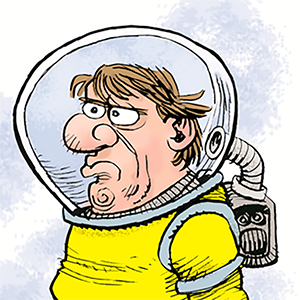Barefoot Fashion Steps Into the Spotlight
Published in Fashion Daily News
NEW YORK — From high-end fashion runways in Paris to casual streetwear in Brooklyn, the act of going barefoot has shifted from cultural curiosity to a niche trend with global resonance. Barefoot fashion, once relegated to counterculture communities and yoga studios, has begun to leave footprints on mainstream style. Designers, influencers and wellness advocates are converging around the idea that less is more when it comes to footwear.
The Roots of a Movement The concept of walking without shoes is not new. For centuries, cultures in Asia, Africa and the Pacific have regarded bare feet as symbols of humility, respect or connection to the earth. But in Western fashion circles, the idea of visible bare feet long carried connotations of poverty or rebellion. The tide began to turn during the late 1960s counterculture, when going shoeless was both a statement against conformity and an embrace of natural living.
That ethos has reemerged in the 21st century, backed by a growing emphasis on wellness and authenticity. “The pandemic recalibrated how people think about comfort,” said Maya Lopez, a footwear industry analyst. “If we spent two years indoors without shoes, it’s not surprising that some people now view barefoot living as stylish rather than sloppy.”
From Catwalk to Sidewalk Designers have taken notice. Several fashion houses incorporated barefoot models in recent seasons, a striking visual amid tailored suits and flowing gowns. Instead of stilettos or sneakers, the unclad foot itself became the accessory, sometimes adorned with jewelry, metallic paint or minimalist anklets.
Streetwear brands, too, have leaned into barefoot imagery. Campaigns for athleisure lines occasionally feature models padding through lofts or gardens barefoot, projecting an image of relaxation and unfiltered individuality. While the majority of consumers still buy shoes, the symbolic embrace of barefoot aesthetics has made its mark.
Health and Wellness Arguments Behind the aesthetic lies a conversation about biomechanics and health. Advocates claim that freeing the feet improves posture, strengthens muscles and allows for a more natural gait. Some podiatrists caution against over-romanticizing the practice, pointing out the risks of injury and exposure to unsafe surfaces.
Still, the barefoot trend aligns with broader movements toward minimalism and body awareness. “It’s not just about fashion, it’s about identity,” said Dr. Alan Berger, a physical therapist who consults with dancers. “When you’re barefoot, you feel grounded. That sense of authenticity resonates in today’s culture.”
Celebrity Influence As with many fashion shifts, celebrity culture has played a role. High-profile actors, musicians and athletes have been photographed shoeless at music festivals, beachside events and even informal red-carpet appearances. These images circulate widely on social media, normalizing and glamorizing the absence of footwear.
On TikTok, hashtags like #barefootstyle and #shoelesslife have generated millions of views, often showing influencers styling outfits around the absence of shoes or pairing accessories like toe rings and anklets with everyday looks.
Resistance and Stigma Despite its growing visibility, barefoot fashion faces resistance. In many public settings, shoes remain non-negotiable for hygiene, safety and cultural reasons. Restaurants, shops and transportation hubs often enforce footwear requirements. In the corporate workplace, the idea is even more fraught.
Sociologists note that the stigma attached to bare feet has not disappeared, particularly in professional or formal contexts. For every admirer of barefoot minimalism, there are critics who regard it as inappropriate, unserious or even offensive. The tension between self-expression and social norms has become part of the conversation.
Commercial Opportunities Paradoxically, the rise of barefoot fashion has spurred new commercial opportunities. Jewelry brands are producing more anklets and toe rings, while skincare companies market specialized creams and exfoliants for feet now on display. Some designers have even created “invisible shoes” — translucent silicone soles that adhere to the bottom of the feet, offering protection while giving the illusion of barefoot walking.
“It’s ironic,” said fashion historian Claire Wu. “A movement about rejecting footwear has actually created new product categories. That’s the fashion industry: it can commodify almost anything.”
Global Perspectives Outside Western markets, barefoot fashion intersects with longstanding cultural practices. In India, Japan and Polynesia, removing shoes before entering a home or temple is customary. Designers in those regions have begun to highlight barefoot aesthetics in ways that honor tradition while appealing to international audiences.
At the same time, global tourism has fueled cross-cultural debates. In places where going barefoot is normative, visitors sometimes treat it as a novelty or fashion statement, prompting discussions about cultural sensitivity.
The Future of Barefoot Fashion As with many trends, barefoot fashion’s future may hinge on its adaptability. Experts believe it will continue to thrive in specific contexts — beachwear, resort fashion, festival culture and wellness retreats. Whether it becomes a permanent feature of high fashion is less certain.
Still, the symbolism of going barefoot is likely to persist. “Feet are universal. They carry metaphorical weight in every culture,” said Wu. “When you make them visible, you’re making a statement about vulnerability, freedom and presence. That has a timeless appeal, even if the trend itself waxes and wanes.”
Conclusion Barefoot fashion may never replace shoes in daily life, but its imprint on style is undeniable. What began as an act of rebellion has evolved into a nuanced aesthetic embraced by designers, wellness advocates and celebrities alike. Whether on runways, in digital campaigns or on quiet city streets, the sight of bare feet now carries not just connotations of informality, but of individuality and confidence.
As fashion continues to blur the boundaries between clothing, culture and identity, barefoot style is a reminder that sometimes the boldest statement is also the simplest: stepping forward with nothing between yourself and the ground.






Comments